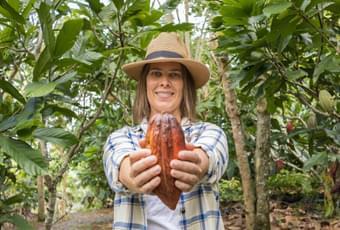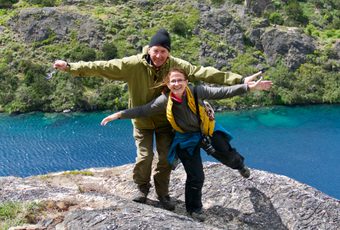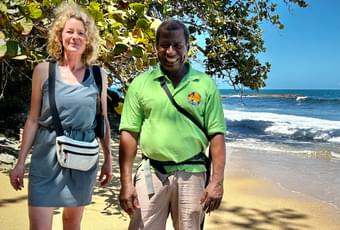Uncovered tomb! Royal mummies! Sacrificial victims! Where's my bullwhip...?
[caption id="attachment_1361" align="aligncenter" width="502"] Not this time Señor Huaquero! A tomb looter reveals one of his stolen artifacts at another site.[/caption]
Not this time Señor Huaquero! A tomb looter reveals one of his stolen artifacts at another site.[/caption]
As a follow up to my previous post about the exploits of M. Thierry Jardin, I was overjoyed to read the story we earlier flagged up on Twitter, about the discovery of a fully intact Huari tomb at El Castillo de Huarmey north of Lima. Royal mummies, gold and silver jewellery, possible sacrificial victims? Yes! Dr Jones, eat your heart out!
A couple of points in particular stood out for me when reading this news. Firstly, the Huari are one of the Pre-Inca civilisations about which least is known, so the discovery will surely add considerably to the knowledge bank.
The Huari, as forerunners of the Incas, had their story very much suppressed by the latter, in the traditional custom of denying the history of your predecessors. ?History is written by the victors'? except, with no written literature, the vanquished are as likely to be simply forgotten as misrepresented. The fact the Incas were so successful in convincing the Spanish they were effectively the first properly organised Andean society goes a long way towards explaining why the vast majority of our knowledge of societies and civilisations such as the Huari, the Moche, the Chachapoyans and the Nazca, have only come to light within the last century or even the last few years.
Secondly, the location on the coast ? being an intact tomb ? is thoroughly surprising. It?s pretty well accepted that there are any number of undiscovered, or at least unanalysed, Pre-Colombian ruins littered amongst the high peaks and passes of the Andes. However most of the much more accessible coastal sites have long since been exposed ? if not by explorers and archaeologists - then certainly by the huaqueros (looters). The secrecy of the digging at Huarmey adds to the intrigue.
One only has to think of the amazing discovery a few years back of the 200-odd mummies in the Condors Lagoon ? an incredibly remote site - yet one which had been ransacked of any obviously valuable relics, mummies not being themselves intrinsically valuable, (and happily the quipus' value is scholastic). My point being that if the huaqueros had come across sites in locations such as this, it?s just astonishing that they?ve missed anything on the exposed coast, such as the Lord of Sipan?s tomb, or this latest discovery.
The name huaqueros, by the way, comes from the Quechua word, ?huaca,? signifying a sacred site. They (huaqueros, not huacas) are, of course, the scourge of archaeologists and historians worldwide, but they?re massively prevalent in Peru, where looting is almost a vocation. Reading about huaqueros in Hugh Thomson?s excellent Cochineal Red, one almost yields a grudging respect for their tenacity and diligence in uncovering and purloining historic treasure. I say respect in much the same way as one might acknowledge that the conquistadors showed no little bravery and ingenuity in their toppling of the Inca Empire: both share personal gain as their primary motive.
Knowledge of how many sites will only ever be seen with their treasures long gone makes it, therefore, all the more vital we celebrate these rare exceptions to the rule. They mean that dreams of discovery live on, and that secrets of past civilisations will continue to be revealed. Join us on one of our Peru holidays, and make your own investigations into the lost (and found) treasures of the Andean world.
The Pothole is Pura Aventura's popular monthly email. We share what we love, what interests us and what we find challenging. And we don't Photoshop out the bits everyone else does. We like to think our considered opinions provide food for thought, and will sometimes put a smile on your face. They've even been known to make people cry. You can click here to subscribe and, naturally, unsubscribe at any time.






